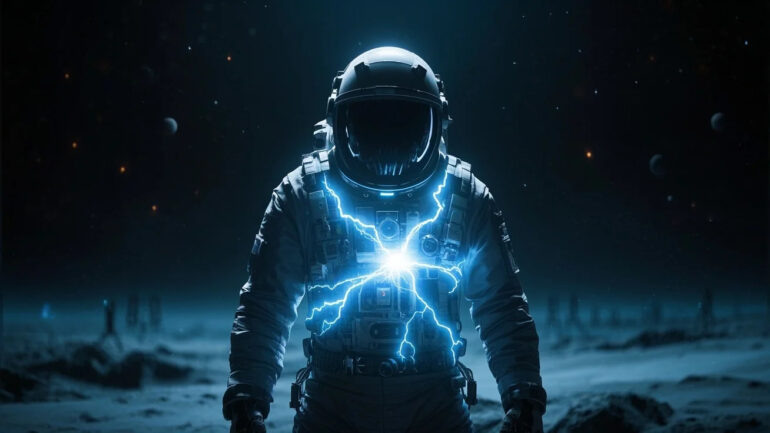The world watched humanity take its “giant leap” to the Moon. The Apollo missions are a testament to human courage, but what if the true cost was far higher, and more insidious, than we were ever told?
The Invisible Ocean: A Cosmic Russian Roulette
Explorer 1 discovered the Van Allen radiation belts – an “invisible ocean” of intense radiation. To reach the Moon, astronauts had to fly straight through these “furious rings”. Beyond lay Galactic Cosmic Rays (GCRs) and terrifying Solar Particle Events (SPEs) – “cosmic hurricane[s]” unleashing “lethal torrent of protons” with “almost no warning”.
NASA knew this was a “game of cosmic Russian roulette”. A “free-return trajectory” meant crews “could not turn back” if a major solar storm erupted, forcing them to “ride it out for days”. This “trade-off made in silence” was omitted from the heroic public narrative.
Engineering Confidence: A Chasm of Truth
NASA “engineered” the Apollo story with “precision,” building “absolute confidence”. This involved “systemic omission” of “unsettling uncertainties”.
Publicly, “adequate shielding” and a Solar Particle Alert Network (SPAN) were assured. In reality, “adequate shielding” was “functionally useless against a major solar storm,” and SPAN was an “obituary service, not an alarm bell”. Astronauts, through “immense discipline,” maintained this facade, creating a “profound chasm between public perception and private reality”.
The Universe’s Silent Assault: Streaks, Storms, and Hidden Damage
Deep in space, astronauts reported eerie “streaks in the dark” – “flashes of light… behind his closed eyelids”. Scientists confirmed these were GCRs tearing through their brains, each flash the “footprint of a subatomic bullet passing through a human brain“. Publicly, these were dismissed as “curious anomalies”.
The gamble became terrifyingly real when, between Apollo 16 and 17, “the universe ran the experiment NASA had spent a decade praying to avoid”. On August 2, 1972, “a fusillade of the most violent solar flares ever recorded” erupted. Post-event analysis revealed an Apollo crew caught in its path would have absorbed the “median Lethal Dose,” meaning a “50% chance of dying within 60 days“. This “storm that missed” proved Apollo’s success was “contingent less on engineering genius than on a profoundly lucky roll of the cosmic dice”. It was never disclosed, preserving a story of “total mastery over the elements”.
The Body’s Silent Ledger: A Legacy of Delayed Costs
Decades later, a 2016 study in “Scientific Reports” by Dr. Michael Delp revealed a “statistical thunderclap”. 43% of deceased lunar astronauts had died from cardiovascular disease—a rate “four to five times higher” than their peers.
Delp’s team linked this to deep space radiation, suggesting GCRs had been “silently savaging their vascular system,” leading to chronic damage. While the study had a “punishingly small sample size,” it was “the first clinical evidence suggesting that deep space travel carries a unique, long-tail, and potentially lethal cost”. “The body, it turned out, kept a more honest ledger than the press releases”.
The Martian Shadow: Confronting Unanswered Questions
Humanity’s ambition for Mars is “haunted by the ghosts of the Moon”. A Mars mission is a “three-year marathon” where GCRs are “an atmosphere to be breathed for years”—”cumulative, relentless, and unavoidable,” with no viable shielding.
Apollo’s minimized data is now critical: light flashes are “hard proof of neural pathway penetration,” and the cardiovascular study is a “stark warning”. Current models show a Mars mission “shatters” NASA’s career radiation limits. This forces an ethical confrontation: astronauts must either accept a “known, high probability of developing a fatal illness” or await a propulsion revolution. The profound danger in Apollo was “never solved at all. It was survived”. The question for future voyages is not if we can go, but “what are we willing to hide from ourselves to get there?“.
Delve deeper into the astounding story NASA downplayed. Uncover the science, the secrets, and the profound human cost of humanity’s boldest adventure.

